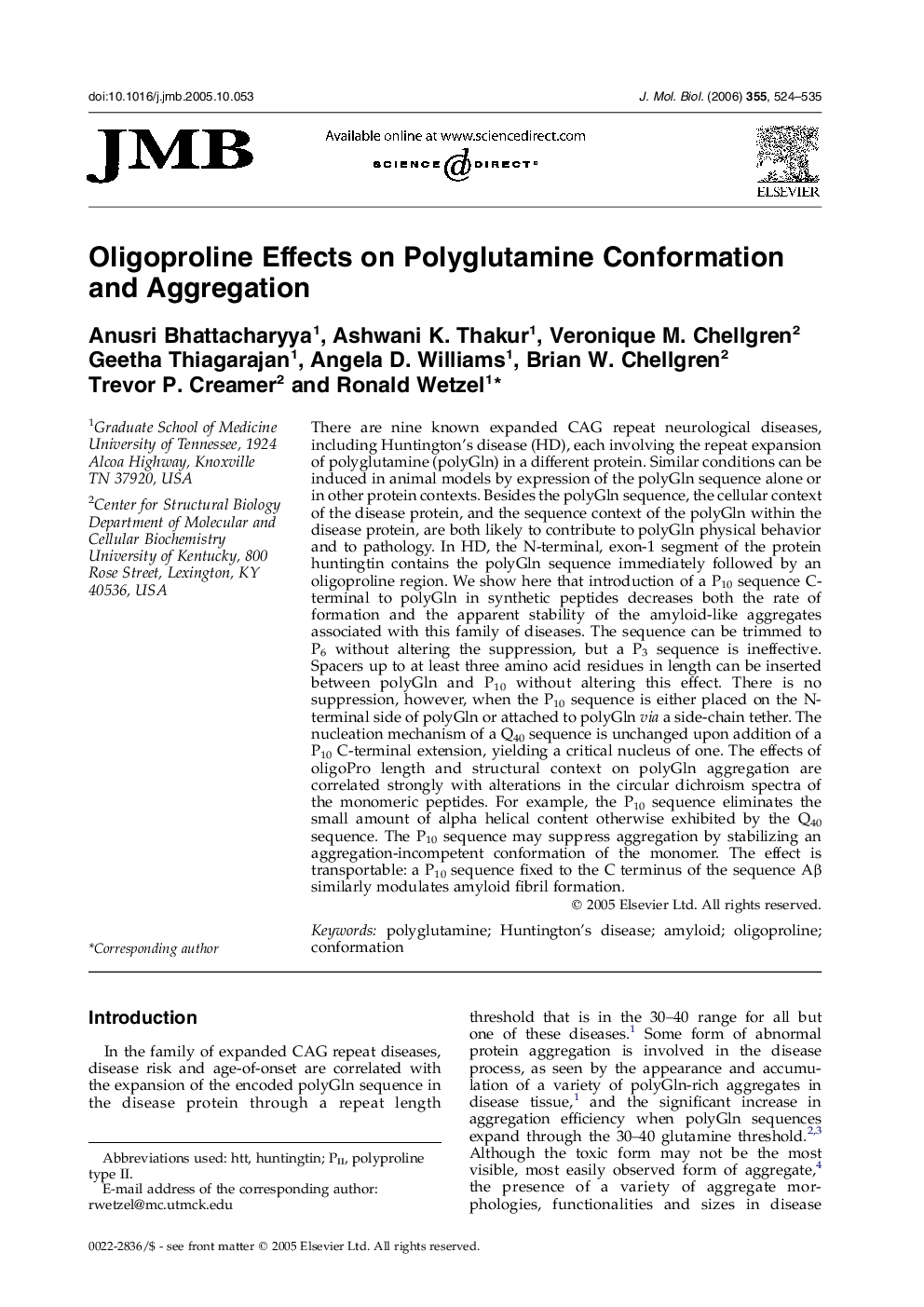| کد مقاله | کد نشریه | سال انتشار | مقاله انگلیسی | نسخه تمام متن |
|---|---|---|---|---|
| 2190252 | 1096248 | 2006 | 12 صفحه PDF | دانلود رایگان |

There are nine known expanded CAG repeat neurological diseases, including Huntington's disease (HD), each involving the repeat expansion of polyglutamine (polyGln) in a different protein. Similar conditions can be induced in animal models by expression of the polyGln sequence alone or in other protein contexts. Besides the polyGln sequence, the cellular context of the disease protein, and the sequence context of the polyGln within the disease protein, are both likely to contribute to polyGln physical behavior and to pathology. In HD, the N-terminal, exon-1 segment of the protein huntingtin contains the polyGln sequence immediately followed by an oligoproline region. We show here that introduction of a P10 sequence C-terminal to polyGln in synthetic peptides decreases both the rate of formation and the apparent stability of the amyloid-like aggregates associated with this family of diseases. The sequence can be trimmed to P6 without altering the suppression, but a P3 sequence is ineffective. Spacers up to at least three amino acid residues in length can be inserted between polyGln and P10 without altering this effect. There is no suppression, however, when the P10 sequence is either placed on the N-terminal side of polyGln or attached to polyGln via a side-chain tether. The nucleation mechanism of a Q40 sequence is unchanged upon addition of a P10 C-terminal extension, yielding a critical nucleus of one. The effects of oligoPro length and structural context on polyGln aggregation are correlated strongly with alterations in the circular dichroism spectra of the monomeric peptides. For example, the P10 sequence eliminates the small amount of alpha helical content otherwise exhibited by the Q40 sequence. The P10 sequence may suppress aggregation by stabilizing an aggregation-incompetent conformation of the monomer. The effect is transportable: a P10 sequence fixed to the C terminus of the sequence Aβ similarly modulates amyloid fibril formation.
Journal: Journal of Molecular Biology - Volume 355, Issue 3, 20 January 2006, Pages 524–535